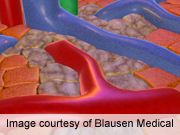Article
New Interferon-free Treatment Options for Patients with Hepatitis C
Author(s):
Data presented at The Liver Meeting show that treatment with a combination of three direct-acting antivirals plus ribavirin achieved virus control in almost all patients with hepatitis C in a phase II study.

A new era of interferon-free treatment may be coming to hepatitis C patients. Researchers at The Liver Meeting, the 63rd Annual Meeting of the American Association for the Study of Liver Diseases (AASLD), presented study results showing that a combination of three orally administered direct-acting antivirals (DAAs) plus ribavirin achieves excellent virus control in almost all patients, both treatment-naïve and non-responders to peginterferon/ribavirin.
Twelve weeks of treatment with the DAA/ribavirin combination led to sustained virological response 12 weeks after treatment (SVR12) in 98% of treatment-naïve patients and 93% of null responders, reported Kris Kowdley, MD, of the Virginia Mason Medical Center in Seattle, WA.
The Phase IIb trial used three agents in development from Abbott Laboratories, called ABT-450/r, ABT-267, and ABT-333. Each agent interferes with a different aspect of viral metabolism.
Patients enrolled in the trial were infected with genotype 1 hepatitis C virus, non-cirrhotic, mostly white, with a median age of 50. In the treatment-naïve group, about 30% of patients were of the CC genotype for IL28B, the genotype most susceptible to treatment with standard peginterferon/ribavirin. In the null responder group, only 2% were of this genotype.
Treatment-naïve patients received triple DAA plus ribavirin for eight weeks, and then either continued that therapy, or had one drug removed from the mix for the next four weeks (all participants continued to receive ABT-450/r). Null responders received either triple DAA plus ribavirin, or that mix minus ABT-333 for 12 weeks.
The best responses were seen in patients receiving triple DAA/ribavirin treatment, which led to SVR12 in 97.5% of treatment-naïve patients, and 93.3% of null responders.
SVR12 was achieved in 100% of patients with genotype 1b who received triple therapy, regardless of group. “We were impressed. This suggests that going forward, these patients might be candidates for fewer therapies or ribavirin-sparing therapies,” said Kowdley. In patients with genotype 1a, SVR12 was achieved in 96% of treatment-naïve patients and 89% of null responders. No impact was seen on treatment response for IL28B genotype.
There were no study drug-related serious adverse events, Kowdley said. There was one case of arthralgia that was possibly related to study drug, and one case of cholestatic hepatitis in a patient with gallstones.
The most commonly reported adverse events were fatigue, headache, nausea, and insomnia; fatigue and headache occurred in approximately 30% of patients. The only frequent lab abnormality was an elevation of bilirubin, and there were several patients whose ALT levels were elevated, but none of these patients discontinued.
As the drugs move to Phase III studies, researchers will compare treatment with and without ribavirin, Kowdley said.





